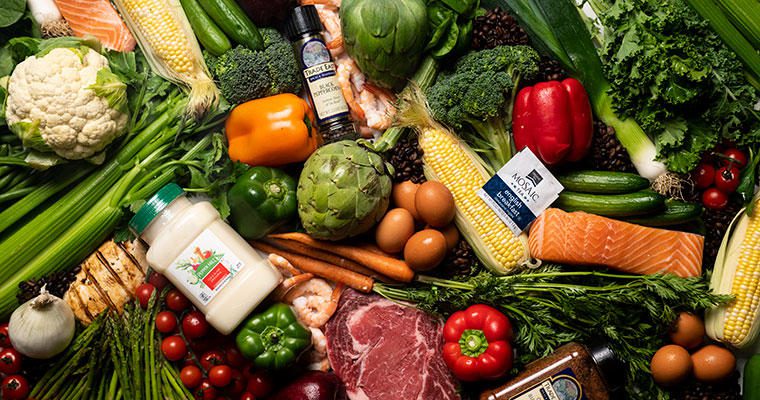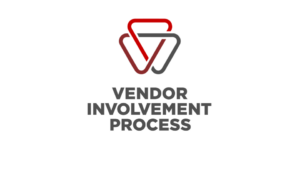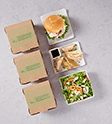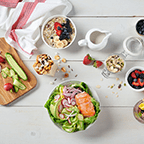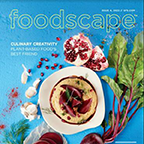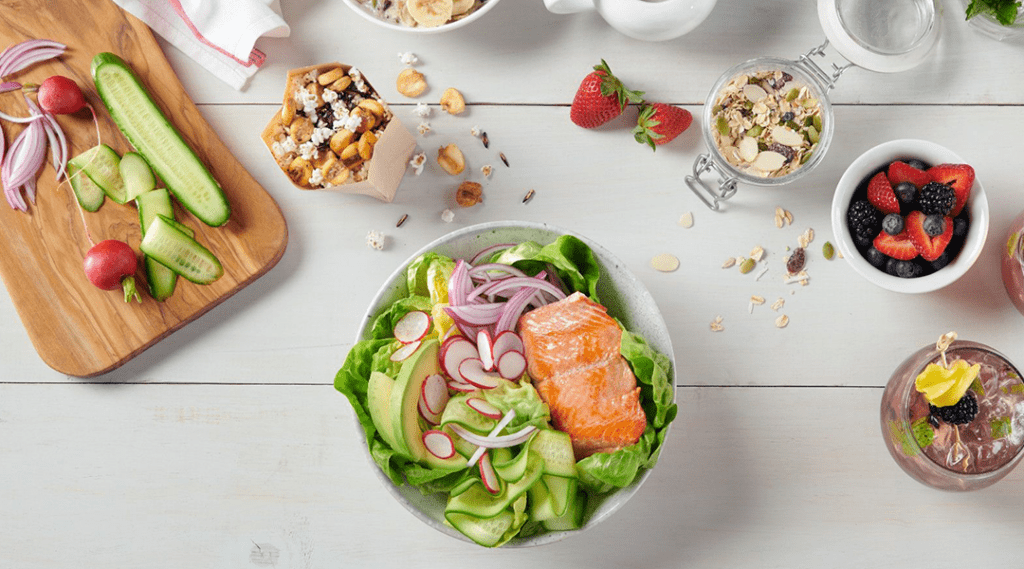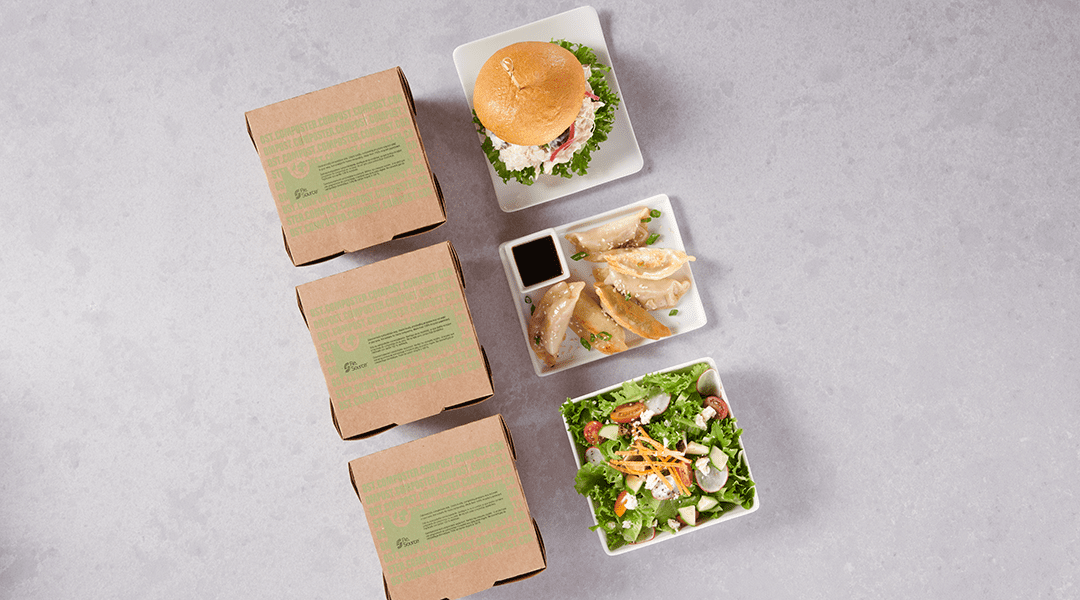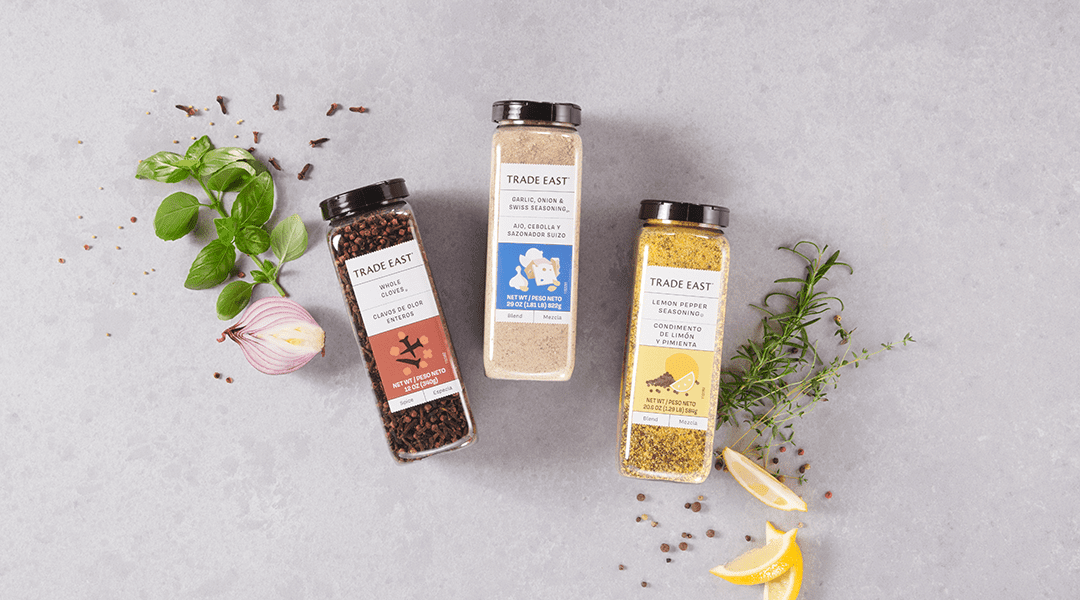Engaging with customers on food issues they care about builds trust, satisfaction and business. The key is to find out which issues matter most to your customers—and then apply transparency to address them on your menu and beyond. The old adage “you are what you eat” has never meant more to consumers than it does today. For many, it’s not enough to know the name and ingredients of a dish.
“People want to know what’s in the food you serve, where it comes from, how it was processed and how it impacted the environment,” says Gordon Food Service Healthcare Segment Manager Dana Fillmore, RD. “Some are also interested in the culture and business practices of your organization. That’s true of both customers and employees.”
In other words, customers and employees alike want you to be transparent—meaning they want you to be open, honest and accountable about the food you serve and the procedures you employ.
The challenge for operators is that different people are interested in different things. Gluten-free. Locally sourced. Heart-healthy. Non-GMO. Humanely raised. These are just a few of the many food attributes on consumer radars these days.
“It’s important to tap into your customer base to find out exactly what they’re passionate about,” Fillmore advises. “See what matters most to them and focus on addressing their top issues.”
Top-of-mind issues might be quite different between different operations and areas of the country. “You have to determine what is going to resonate the most with the people you serve,” Fillmore says.
Sustainable and Clean
“Sustainable” and “clean” are two attributes that tend to resonate with consumers across regional and operational divides.
The International Food Information Council Foundation reported in 2018 that 6 in 10 consumers say it is important to them that the food they purchase or consume is produced in a sustainable way. That’s an increase from 50 percent who said the same in 2017.
This study also found a preference for clean products, as least as defined by an absence of artificial ingredients. About 7 in 10 consumers would be willing to give up a familiar favorite product for one that did not contain artificial ingredients.
Both sustainable and clean can mean different things to different people. Consumers may use clean to describe foods that are free from chemical preservatives, antibiotics, GMOs, high fructose corn syrup, MSG or artificial ingredients. Other consumers cite traceability as a key attribute of clean label. Clean can also apply to the way food is “grown,” whether it’s pasture-raised beef, crate-free pork or cage-free eggs.
When it comes to sustainability, the most common interpretation revolves around ecology and the environment. But for many, it’s about health and nutrition. Others equate it with social responsibility and support of local communities.
The fact that there are no universal definitions or standards for these terms reinforces the need to talk to your customers. They will tell you what sustainable and clean mean to them—and whether they consider these and other attributes important.
Feel-good dining
No operator can build a menu that meets every possible definition for clean and sustainable. But, Fillmore notes, operators can offer selections that help customers feel good about their eating experience.
When you are transparent about the things that are important to your customers, you help validate their perspectives and the food choices they make. It can also help educate less-informed customers about the value of healthy nutrition—something healthcare providers are increasingly embracing as part of their mission.
“Healthcare foodservice directors tend to feel a sense of obligation to offer healthier foods,” Fillmore says. Being transparent about what and why you put certain items on the menu can help raise awareness of the connection between food and health.
Transparency also can help reinforce your trustworthiness as a source on food issues. Fillmore suggests that foodservice directors combine their expertise with that of physicians, dietitians and their own staffers to solidify the accuracy and relevance of information.
“Foodservice relies heavily on younger workers, and they are very cause-oriented,” Fillmore says. “Transparency is important to them because it helps them support causes they believe in, whether it’s sustainable seafood, animal welfare, cleaner ingredients, gluten-free eating, halal compliance or healthy living—whatever healthy might mean to them.”
Taste and price remain top drivers of food purchases for all ages, but the passion of informed consumers is making sustainable and healthfulness more important factors in dining choices. Healthcare employees who eat in their employers’ retail settings every day may be even more likely to make decisions based on healthfulness or sustainability than when they’re dining out for special occasions.
Health is part of the mission for hospitals, senior living and other healthcare foodservice organizations, so it makes good sense to offer choices that meet customer definitions of healthy. Being transparent about those choices can help you forge more meaningful connections with customers.
Putting transparency in action
Operators that offer greater transparency can differentiate themselves in the marketplace and build customer loyalty—for example, keeping hospital employees and visitors on campus rather than in a restaurant down the street. They may even find that transparency delivers a recruiting advantage, both inside and outside the foodservice department.
Here are three key ways to establish transparency as a differentiator.
1. Provide choices on your menu
Survey your customers to find out what food issues matter to them—and what exactly they mean by terms like sustainable and clean. Then introduce menu items that address their expectations.
LTOs (Limited Time Offers) and specials are a great way to test customer appetite for cleaner, more sustainable foods. Remember, you’re not just serving up a new dish—you also must present information about its origins and preparation. And you’re testing whether the information you’re sharing is relevant, easy to understand and useful.
2. Train staff in new ways to prepare and serve items
Certain lifestyle choices—like gluten-free eating and kosher compliance—require back-of-the-house and front-of-the-house employees to follow stringent procedures. You’ll have to train staff and consistently reinforce the importance of following the rules. Customers won’t accept slip-ups.
3. Communicate to your customer base
Identify clean and sustainable items on your menu and at the point-of-sale using those terms and/or more specific ones like kosher and non-GMO. Train front-of-the-house staff to speak intelligently about these issues.
For instance, what do you mean by “clean” on a specific item? Did you substitute organic chicken for conventional? Did you make your own marinade with fresh herbs rather than use a packaged marinade? Being able to speak directly to guests will further emphasize your commitment to transparency.
Promote and explore these issues in greater detail on your social media and web pages, and/or on your company intranet.
Making Transparency Easier
The Clear Choice Program from Gordon Food Service can help operators become more transparent with their customers. It identifies products and describes their attributes in six categories:
- Cleaner ingredients
- Specialty agriculture
- Animal care
- Sustainable seafood
- Ethically sourced
- Environmentally friendly
The Clear Choice program allows customers to utilize our Online Ordering system to find and select from thousands of products across these six categories of claims and third-party certifications. Talk with your Sales Representative for more information.
